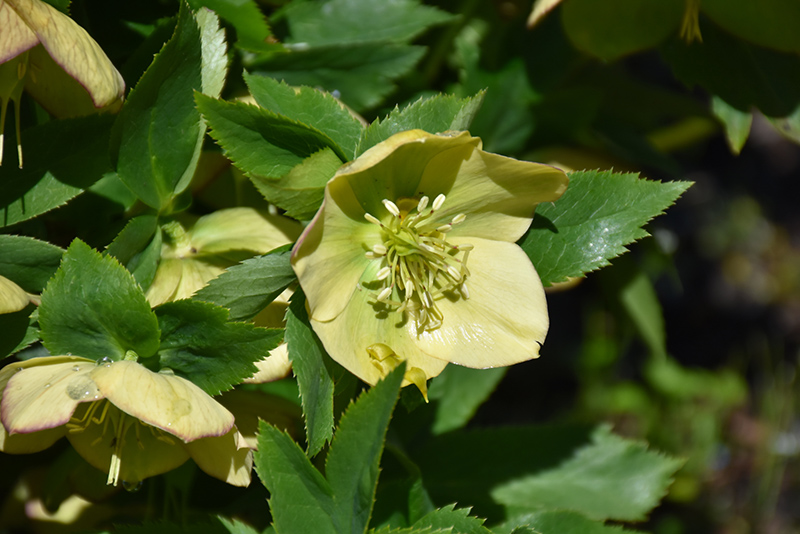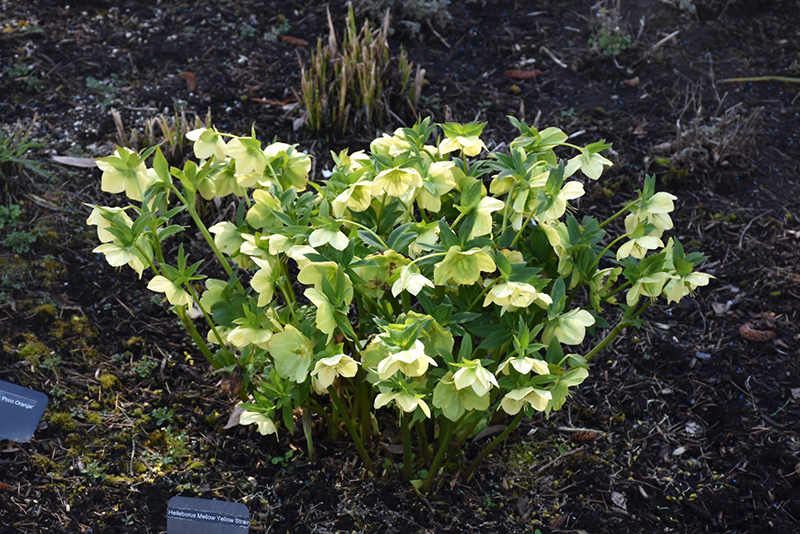Mellow Yellow Hellebore
Helleborus 'Mellow Yellow'
Height: 15 inches
Spacing: 18 inches
Sunlight:
![]()
![]()
Hardiness Zone: 4a
Other Names: Mello Yellow, Lenten Rose, Winter Rose
Description:
A unique perennial that blooms in late winter and early spring; flowers are buttery yellow, potentially with fine burgundy spots or edges; this very showy plant is excellent for borders where protected from winter winds
Ornamental Features
Mellow Yellow Hellebore features showy nodding yellow cup-shaped flowers with light green overtones and burgundy spots at the ends of the stems from late winter to early spring. Its attractive glossy oval compound leaves remain dark green in color throughout the year.
Landscape Attributes
Mellow Yellow Hellebore is an herbaceous evergreen perennial with an upright spreading habit of growth. Its medium texture blends into the garden, but can always be balanced by a couple of finer or coarser plants for an effective composition.
This is a relatively low maintenance plant, and should be cut back in late fall in preparation for winter. Deer don't particularly care for this plant and will usually leave it alone in favor of tastier treats. It has no significant negative characteristics.
Mellow Yellow Hellebore is recommended for the following landscape applications;
- Mass Planting
- Rock/Alpine Gardens
- Border Edging
- General Garden Use
- Naturalizing And Woodland Gardens
Planting & Growing
Mellow Yellow Hellebore will grow to be about 12 inches tall at maturity, with a spread of 24 inches. When grown in masses or used as a bedding plant, individual plants should be spaced approximately 18 inches apart. Its foliage tends to remain dense right to the ground, not requiring facer plants in front. It grows at a medium rate, and under ideal conditions can be expected to live for approximately 5 years. As an evegreen perennial, this plant will typically keep its form and foliage year-round.
This plant does best in partial shade to full shade. Keep it well away from hot, dry locations that receive direct afternoon sun or which get reflected sunlight, such as against the south side of a white wall. It does best in average to evenly moist conditions, but will not tolerate standing water. It may require supplemental watering during periods of drought or extended heat. It is not particular as to soil pH, but grows best in rich soils. It is somewhat tolerant of urban pollution, and will benefit from being planted in a relatively sheltered location. This particular variety is an interspecific hybrid, and parts of it are known to be toxic to humans and animals, so care should be exercised in planting it around children and pets. It can be propagated by division; however, as a cultivated variety, be aware that it may be subject to certain restrictions or prohibitions on propagation.



